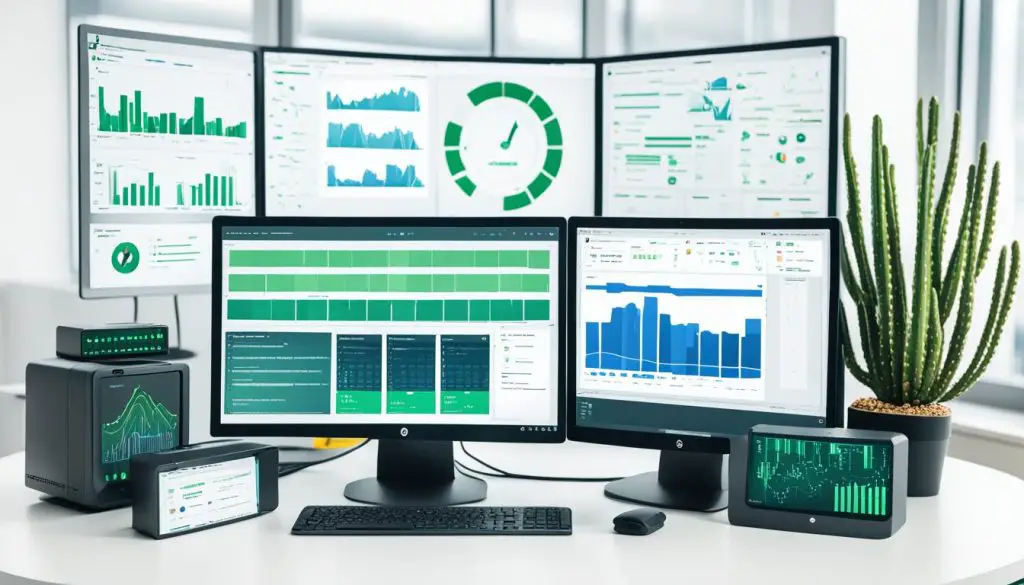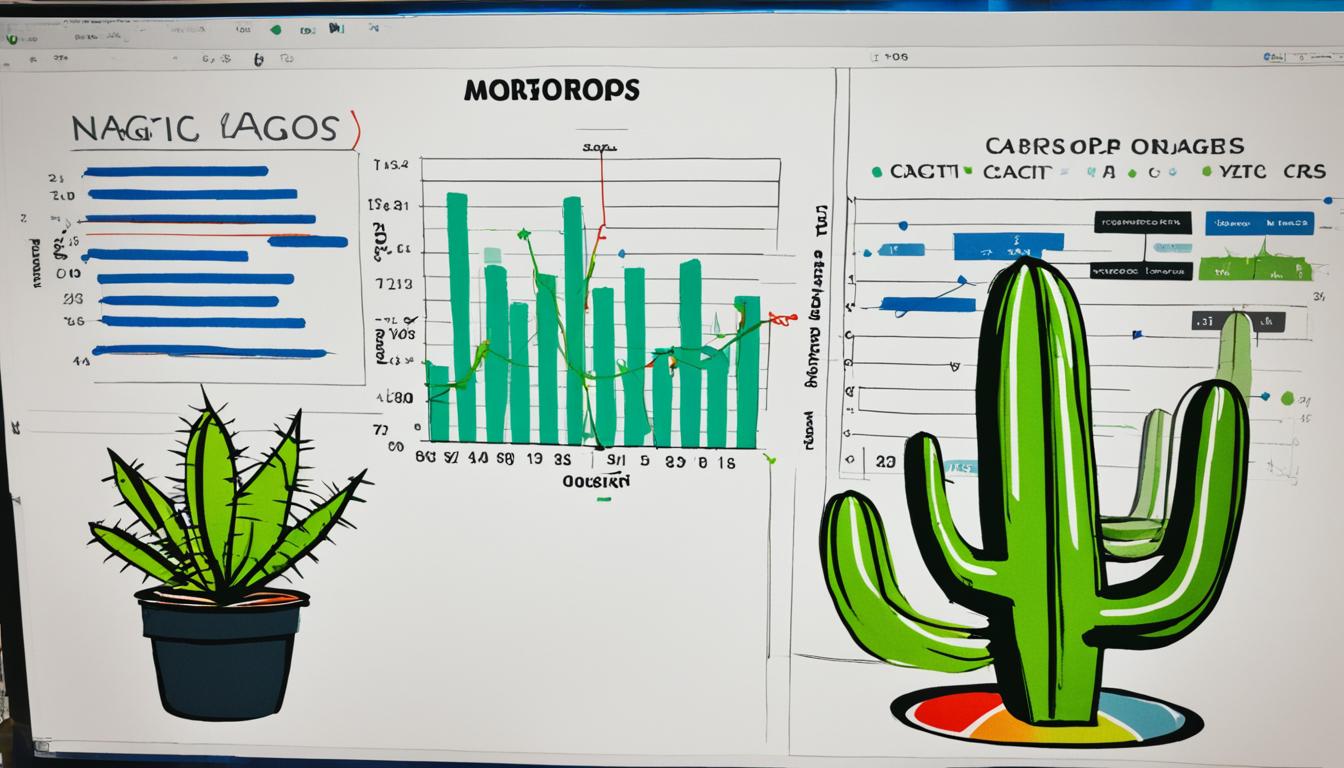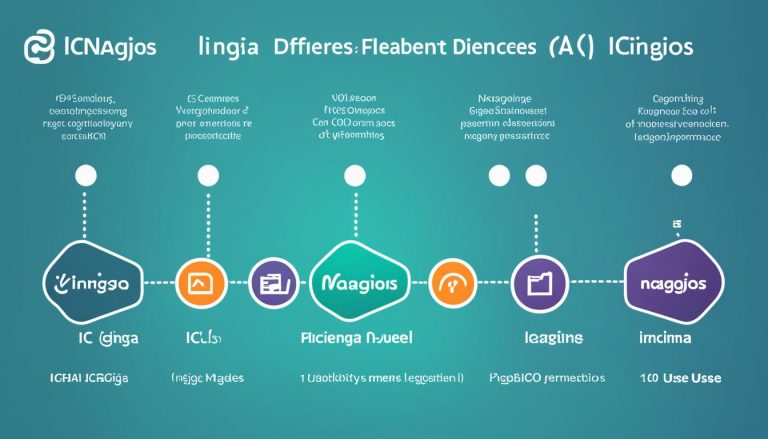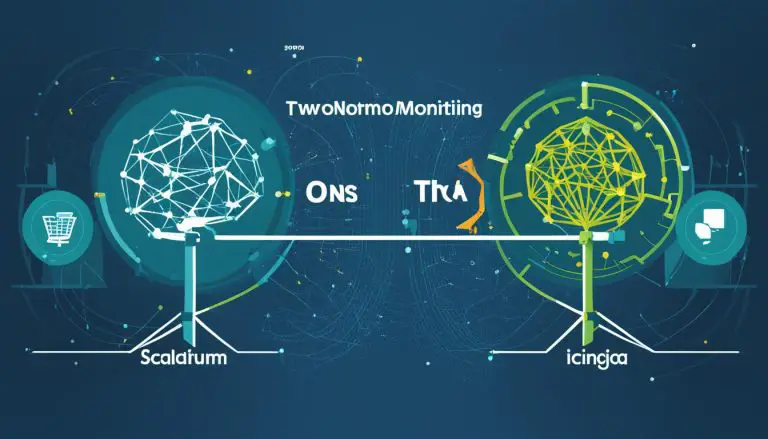Nagios vs. Cacti: An In-Depth Monitoring Comparison
Nagios vs. Cacti: An In-Depth Monitoring Comparison
When it comes to choosing the right monitoring solution for your network, two popular options that often come up are Nagios and Cacti. Nagios and Cacti are both powerful tools, but they were developed with different focuses in mind.
Nagios was built with a strong emphasis on alerting. It excels at actively monitoring your network and sending alerts when issues arise. With Nagios, you can set up team-based alerts, passive checks, and support for various protocols and agents such as SSH, WMI, SNMP, and Windows agents, making it a robust and unified solution for comprehensive monitoring.
On the other hand, Cacti was designed primarily for graphing. It is an excellent choice if you already have a monitoring solution in place and primarily want to visualize and analyze performance graphs. Cacti’s integration with RRDTool allows it to generate detailed and customizable graphs, providing valuable insights into the performance of your network.
Although Nagios and Cacti have different strengths, it’s worth noting that both tools offer addons that can enhance their functionalities. These addons can bridge the gap between alerting and graphing, providing a more unified monitoring solution that meets specific user requirements.
In summary, if your main focus is on alerting and advanced monitoring capabilities, Nagios is the way to go. With its extensive set of features, Nagios offers a powerful and comprehensive monitoring solution. On the other hand, if you already have a monitoring solution and need performance graphs to analyze your network’s performance, Cacti is a great choice.
Stay tuned for the next sections where we will dive deeper into the comparison between Cacti, Nagios, and other monitoring tools.
When it comes to choosing the right monitoring application for your needs, there are several options to consider. Three popular choices in the market are Cacti, Nagios, and Pandora FMS. Each of these tools has its own unique approach and features that cater to different monitoring requirements.
Let’s start with Cacti, which puts a strong emphasis on graphics. If you are primarily focused on having visually appealing performance graphs, Cacti can be a great option for you. It allows you to create, customize, and analyze graphs to monitor various metrics in your network.
On the other hand, Nagios is more focused on providing status updates. It is designed to efficiently monitor the status of hosts, services, and network devices. Nagios offers advanced monitoring capabilities such as passive checks, team-based alerts, and support for SSH, WMI, SNMP, and Windows agents.
Pandora FMS stands out by offering a comprehensive solution that covers both graphics and status monitoring. It provides a wide range of features including data storage and management capabilities, network monitoring functionalities, event management features, and support for plugins and out-of-the-box monitoring.
In terms of data storage and management, Cacti uses RRDTool to manage data efficiently. However, it is not designed to function as a conventional database. Nagios, on the other hand, can store data using a relational database and supports add-ons for advanced data management. Pandora FMS offers comprehensive data storage, management, and comparison capabilities, making it well-suited for complex monitoring environments.
When it comes to network monitoring capabilities, Cacti primarily focuses on measuring network traffic using SNMP. It lacks advanced network monitoring features such as network discovery and mapping. Nagios, which initially started as a host monitoring tool, has limitations in terms of network monitoring capabilities. In contrast, Pandora FMS excels in network monitoring, offering features like network discovery, mapping, traps management, and NetFlow support.
Event management is crucial for tracking incidents and events in an IT infrastructure. While Nagios and Cacti offer basic event history functionality, Pandora FMS provides robust event management capabilities. It offers event correlation, auto-validation, and real-time monitoring to effectively manage and track events.
Decentralization and management distribution are important factors to consider in distributed network environments. Nagios and Cacti have limitations in obtaining information from inaccessible networks. Nagios offers an agent catalog to overcome this limitation, while Cacti has a server designed for monitoring high-performance networks. Pandora FMS, on the other hand, offers comprehensive decentralization and management distribution capabilities, making it well-suited for distributed network environments.
When it comes to extensibility, both Nagios and Cacti rely on a wide range of plugins to enhance their functionality. Cacti has a smaller plugin catalog compared to Nagios but benefits from a dedicated company maintaining and managing the plugins. Pandora FMS has a smaller plugin library compared to Nagios, but it offers a collection of ready-to-use plugins and modules, with the added advantage of having a company behind it for maintenance and support.
Lastly, the user community plays a significant role in providing support and an active ecosystem. Nagios has the largest community and a wide range of forks, making it a valuable resource for users. Cacti also has an active user community with forums and a repository of plugins and extensions. Pandora FMS has a compact community but offers active forums and a user-driven module library, allowing for collaboration and improvement of the software.
Comparison Summary
- Cacti focuses on graphics and provides extensive customization options.
- Nagios emphasizes status monitoring and has a large user community.
- Pandora FMS offers a comprehensive set of features, including network discovery, event management, and a user-friendly interface.
Ultimately, the choice between Cacti, Nagios, and Pandora FMS depends on your specific monitoring needs and preferences. Consider factors such as the level of graphics or status monitoring required, data storage and management capabilities, network monitoring functionalities, event management features, decentralization and management distribution capabilities, support for plugins and out-of-the-box monitoring, and the user community. By carefully evaluating these aspects, you can choose the most suitable monitoring tool for your organization.
Data Storage and Management: Cacti vs. Nagios vs. Pandora FMS
When it comes to data storage and management in the realm of network monitoring, Cacti, Nagios, and Pandora FMS each bring their own unique approaches. Let’s take a closer look at how these tools handle data storage and management, and what sets them apart in this aspect.
Cacti: RRDTool-based Data Management
One of the standout features of Cacti is its use of RRDTool for data management. RRDTool, or Round Robin Database Tool, is a powerful tool for storing time-series data. While Cacti utilizes RRDTool for managing data, it’s important to note that it is not designed to function as a conventional database. Instead, it leverages RRDTool’s capabilities to provide efficient and scalable data storage for monitoring purposes.
Nagios: Relational Database Support and Add-ons
Unlike Cacti, Nagios offers support for storing data using a relational database. This provides users with a more traditional and robust data storage solution. Additionally, Nagios provides a wide range of add-ons that enhance its data management capabilities. These add-ons enable more advanced data manipulation and analysis, empowering users to extract valuable insights from their monitoring data.
Pandora FMS: Comprehensive Data Storage and Comparison
When it comes to data storage and management, Pandora FMS takes it to the next level. This comprehensive monitoring solution offers a full-fledged data storage system that goes beyond simple storage. Pandora FMS allows for efficient management, analysis, and comparison of monitoring data, making it particularly well-suited for complex monitoring environments. Whether it’s historical data analysis or real-time performance monitoring, Pandora FMS provides the necessary tools to harness the power of your data.
To summarize, Cacti utilizes RRDTool for data management, Nagios supports a relational database with additional data management add-ons, and Pandora FMS offers a comprehensive data storage and comparison system. The choice of tool depends on the specific requirements and complexity of your network monitoring environment.
Note: The image above serves as a visual representation of the concept of data storage and is relevant to the discussion in this section.
Network Monitoring Capabilities: Cacti vs. Nagios vs. Pandora FMS
When it comes to network monitoring, it’s essential to choose a tool that meets your specific requirements. In this section, we’ll compare the network monitoring capabilities of Cacti, Nagios, and Pandora FMS, highlighting their strengths and limitations.
Cacti:
Cacti primarily focuses on measuring network traffic using SNMP (Simple Network Management Protocol). While it offers robust graphing capabilities, it lacks advanced network monitoring features such as network discovery and mapping. If you’re looking for a solution that provides performance graphs and a user-friendly interface, Cacti might be the right choice for you.
Nagios:
Originally designed as a host monitoring tool, Nagios has limited network monitoring capabilities. However, it can be extended with plugins to support additional functionalities. Nagios is popular for its alerting capabilities and its compatibility with SSH, WMI, SNMP, and Windows agents. If you require a monitoring solution with advanced alerting and notification features, Nagios might be the ideal choice.
Pandora FMS:
In contrast, Pandora FMS excels in network monitoring and offers a comprehensive set of features. It provides network discovery and mapping capabilities, allowing you to visualize your network infrastructure. Additionally, Pandora FMS supports a wide range of protocols, including SNMP, NetFlow, and traps management. If you need a powerful network monitoring tool with extensive capabilities, Pandora FMS is worth considering.
To summarize, Cacti is focused on graphing and SNMP-based network traffic measurement, Nagios excels in alerting and SSH/WMI/SNMP/Windows agent compatibility, while Pandora FMS provides advanced network monitoring features like network discovery, mapping, and support for SNMP, NetFlow, and traps management.
Network Monitoring Features Comparison:
- Cacti
- Graphing capabilities
- SNMP-based network traffic measurement
- Nagios
- Alerting and notification features
- Support for SSH, WMI, SNMP, and Windows agents
- Pandora FMS
- Network discovery and mapping
- Support for SNMP, NetFlow, and traps management
To better understand the differences between these tools, let’s take a closer look at their network monitoring capabilities.
As shown in the comparison table above, each tool has its strengths and areas where it might fall short. Consider your specific monitoring requirements and the features that are critical for your network infrastructure to make an informed decision.
Event Management: Cacti vs. Nagios vs. Pandora FMS
Event management plays a critical role in tracking incidents and maintaining a comprehensive record of events within an IT infrastructure. When comparing Cacti, Nagios, and Pandora FMS in terms of event management capabilities, it’s important to consider the strengths and limitations of each tool.
Nagios offers basic event history functionality, allowing users to view past events and their associated details. However, Nagios falls short when it comes to providing comprehensive event management features. Similarly, Cacti lacks advanced event management capabilities, focusing more on graphing and performance metrics.
On the other hand, Pandora FMS emerges as a robust solution for event management. With Pandora FMS, users can not only track events but also benefit from event correlation, auto-validation, and real-time monitoring. These features enable efficient incident tracking, identification of root causes, and proactive resolution of potential issues.
Event correlation, a standout feature of Pandora FMS, involves analyzing events from multiple sources to identify patterns and relationships. This enables IT teams to gain deeper insights into the overall health and performance of their infrastructure, minimizing downtime and optimizing resource allocation.
In addition, Pandora FMS offers auto-validation, which automatically verifies the status and accuracy of events detected by the monitoring system. This feature helps eliminate false positives and ensures that only valid incidents are tracked, improving the overall quality of event data.
Real-time monitoring is another crucial aspect of event management. Pandora FMS provides real-time alerts and notifications when events occur, enabling IT teams to respond promptly to critical incidents. This proactive approach helps reduce downtime and enhances the overall reliability of the IT infrastructure.
Image:
Decentralization and Management Distribution: Cacti vs. Nagios vs. Pandora FMS
When it comes to decentralized network environments and management distribution, Nagios, Cacti, and Pandora FMS offer different capabilities. Both Nagios and Cacti have limitations when it comes to obtaining information from inaccessible networks, but they address this challenge in different ways.
Nagios offers an agent catalog that enables agent-based monitoring, allowing users to monitor systems and services that are not directly accessible. This decentralized approach enables Nagios to overcome the limitations of traditional network monitoring tools and ensures comprehensive coverage of the IT infrastructure.
Meanwhile, Cacti takes a different approach by providing a server specifically designed for monitoring high-performance networks. This server allows for the efficient management and distribution of network monitoring tasks, even in complex network environments. This decentralized architecture ensures optimal performance and scalability for organizations with large and demanding networks.
On the other hand, Pandora FMS goes even further by offering a comprehensive set of tools and functionalities for distributed network environments. With Pandora FMS, users have access to dedicated tools that facilitate the configuration, management, and distribution of monitoring tasks across globally distributed networks. This ensures that organizations can effectively monitor and manage their network infrastructure, regardless of its complexity or geographical spread.
Benefits of Agent-Based Monitoring
Agent-based monitoring, as offered by Nagios, provides several advantages in decentralized network environments. The use of agents allows for monitoring of systems and services that are otherwise not directly accessible, enabling comprehensive monitoring coverage. Additionally, agent-based monitoring enables organizations to monitor remote and external resources, providing insights into the performance and availability of critical systems and services. With agent-based monitoring, users can leverage Nagios’ advanced monitoring capabilities, such as passive checks, team-based alerts, and support for SSH, WMI, SNMP, and Windows agents.
In conclusion, while Nagios and Cacti provide solutions for decentralized and distributed network monitoring, Pandora FMS offers comprehensive capabilities specifically tailored for globally distributed network environments. Organizations can choose between agent-based monitoring, high-performance network monitoring, or a centralized management system to suit their specific needs. By selecting the right tool, they can ensure efficient and effective monitoring of their network infrastructure.
Plugins and Out-of-the-Box Monitoring: Cacti vs. Nagios vs. Pandora FMS
When it comes to extending functionality, plugins play a crucial role in enhancing the capabilities of monitoring tools. In the case of Nagios, Cacti, and Pandora FMS, plugins offer users the opportunity to customize and tailor the monitoring experience to their specific needs.
Cacti and Nagios both heavily rely on plugins to unlock additional features and functionalities. However, there are notable differences in terms of the plugin catalogs offered by these two tools.
Cacti, although having a relatively smaller plugin catalog compared to Nagios, benefits from having a dedicated company that maintains and manages all the available plugins. Cacti users can rest assured that the plugins available in their catalog are well-supported and continually updated by the company behind the tool.
On the other hand, Nagios boasts a larger plugin catalog, offering users an extensive selection of plugins that cater to various monitoring needs. The vast plugin library enables users to extend Nagios’ functionality in numerous ways, providing ample flexibility and customization options.
While Cacti and Nagios focus primarily on plugins developed by the community, Pandora FMS takes a different approach. Although Pandora FMS offers a smaller plugin library compared to Nagios, it differentiates itself by providing a collection of ready-to-use plugins and modules that are maintained and supported by the company itself.

This dedicated approach ensures that the plugins available for Pandora FMS are of high quality, reliable, and compatible with the latest versions of the tool. Users can leverage these out-of-the-box plugins to quickly enhance their monitoring capabilities without relying solely on the community for support and maintenance.
Overall, while Nagios and Cacti offer a more extensive range of plugins, Pandora FMS differentiates itself by providing a curated collection of ready-to-use plugins and modules directly maintained by the company. This ensures that users have a reliable set of options to choose from without depending solely on community support.
User Community: Cacti vs. Nagios vs. Pandora FMS
When it comes to choosing the right network monitoring tool, the user community can play a crucial role. Let’s compare the user communities of Cacti, Nagios, and Pandora FMS.
Nagios boasts the largest user community in the network monitoring space. With a wide range of forks and contributors, Nagios has garnered immense popularity over the years. This extensive community ensures that there is a wealth of knowledge and support available for Nagios users. However, it’s worth noting that due to the large number of forks, compatibility issues can sometimes arise.
Cacti also has an active and engaged user community. The Cacti community provides great support through forums and discussions. Users can find assistance for troubleshooting issues, sharing ideas, and discovering new plugins and extensions. The community-driven repository of plugins and extensions is an invaluable resource for Cacti users, offering additional functionality and customization options.
While not as large as Nagios or Cacti, Pandora FMS has a compact but vibrant user community. The community members actively participate in forums, sharing their experiences, knowledge, and solutions. The user-driven module library enables users to collaborate and contribute to the improvement and development of the software. This collaborative approach fosters a sense of community and enables users to shape the future of Pandora FMS.
“The user communities of Nagios, Cacti, and Pandora FMS all contribute to the collective knowledge and growth of these network monitoring tools.”
Overall, the user communities of Nagios, Cacti, and Pandora FMS play a vital role in the success of these network monitoring solutions. Whether you prefer the vastness of Nagios’ community, the active engagement of Cacti’s community, or the collaborative spirit of Pandora FMS’ community, you can rely on support, knowledge sharing, and a sense of belonging in any of these user communities.
Management and Configuration: Cacti vs. Nagios vs. Pandora FMS
When it comes to managing and configuring your network monitoring tools, Cacti, Nagios, and Pandora FMS offer different capabilities. Let’s take a closer look at how each of these tools handles user management, role-based access, and overall configuration options.
User Management and Role-Based Access
One area where the three tools differ is in their user management capabilities. Cacti, unfortunately, lacks group profiling, which can make it less suitable for working with operators, clients, and managers who require specific access controls and permissions.
Nagios and Pandora FMS, on the other hand, provide more robust user profiling systems. They offer features like role-based access control, allowing you to define different user roles with specific privileges. This means you can grant or restrict access to certain features or sections of the monitoring tools based on each user’s role and responsibilities.
Configuration Options
When it comes to configuration, Cacti, Nagios, and Pandora FMS each have their own unique approaches.
Cacti allows for extensive customization options, giving you the flexibility to configure the tool according to your specific needs. You can customize data collection intervals, graph templates, and thresholds, among other settings.
Nagios, known for its advanced monitoring capabilities, offers a highly configurable setup. You can define checks, notifications, and thresholds for different hosts and services through configuration files. This level of customization allows for a granular control and fine-tuning of your monitoring setup.
Pandora FMS takes a slightly different approach to configuration by providing a user-friendly web interface. This interface allows you to easily configure various aspects of the tool, such as adding new devices, defining monitoring policies, and setting up alerting rules.
Managing and configuring your network monitoring tools is crucial for ensuring effective monitoring and accurate results. While Cacti, Nagios, and Pandora FMS offer different capabilities in terms of user management and configuration options, it’s important to consider your specific requirements and preferences when choosing the right tool for your organization.
- Cacti lacks group profiling, making it less suitable for working with operators, clients, and managers.
- Nagios and Pandora FMS offer powerful user management systems with role-based access control.
- Cacti provides extensive customization options for configuration.
- Nagios allows for granular control through configuration files.
- Pandora FMS offers a user-friendly web interface for easy configuration.
Conclusion
In conclusion, when it comes to network monitoring tools, Nagios, Cacti, and Pandora FMS each have their own strengths and weaknesses. Nagios stands out for its alerting capabilities and the support of a large user community. On the other hand, Cacti offers powerful graphing functionality and extensive customization options. Meanwhile, Pandora FMS provides a comprehensive set of features, including network discovery, event management, and a user-friendly interface.
The choice between these tools depends on the specific requirements and preferences of the user. If your main focus is on alerting and a robust user community, Nagios would be a great choice. If you prioritize graphing and customization, Cacti is the tool for you. And if you need a full-fledged monitoring solution with advanced features like network discovery and event management, Pandora FMS is worth considering.
It’s important to weigh the pros and cons of each tool to make an informed decision. Nagios excels in alerting but may have a steeper learning curve. Cacti offers powerful graphing but may be less comprehensive in terms of feature set. Pandora FMS provides a user-friendly interface but may require additional investment. Consider your network monitoring needs and match them to the strengths of each tool to find the best fit for your organization.
FAQ
What is the difference between Nagios and Cacti?
How do Cacti, Nagios, and Pandora FMS compare as monitoring applications?
How do Cacti, Nagios, and Pandora FMS differ in terms of data storage and management?
What are the network monitoring capabilities of Cacti, Nagios, and Pandora FMS?
How do Cacti, Nagios, and Pandora FMS compare in terms of event management?
Do Cacti, Nagios, and Pandora FMS support decentralized and distributed management?
What are the options for plugins and out-of-the-box monitoring in Cacti, Nagios, and Pandora FMS?
How do Cacti, Nagios, and Pandora FMS compare in terms of user community and support?
How do Cacti, Nagios, and Pandora FMS differ in terms of management and configuration?
What is the conclusion of the comparison between Nagios and Cacti?
- About the Author
- Latest Posts
Mark is a senior content editor at Text-Center.com and has more than 20 years of experience with linux and windows operating systems. He also writes for Biteno.com





